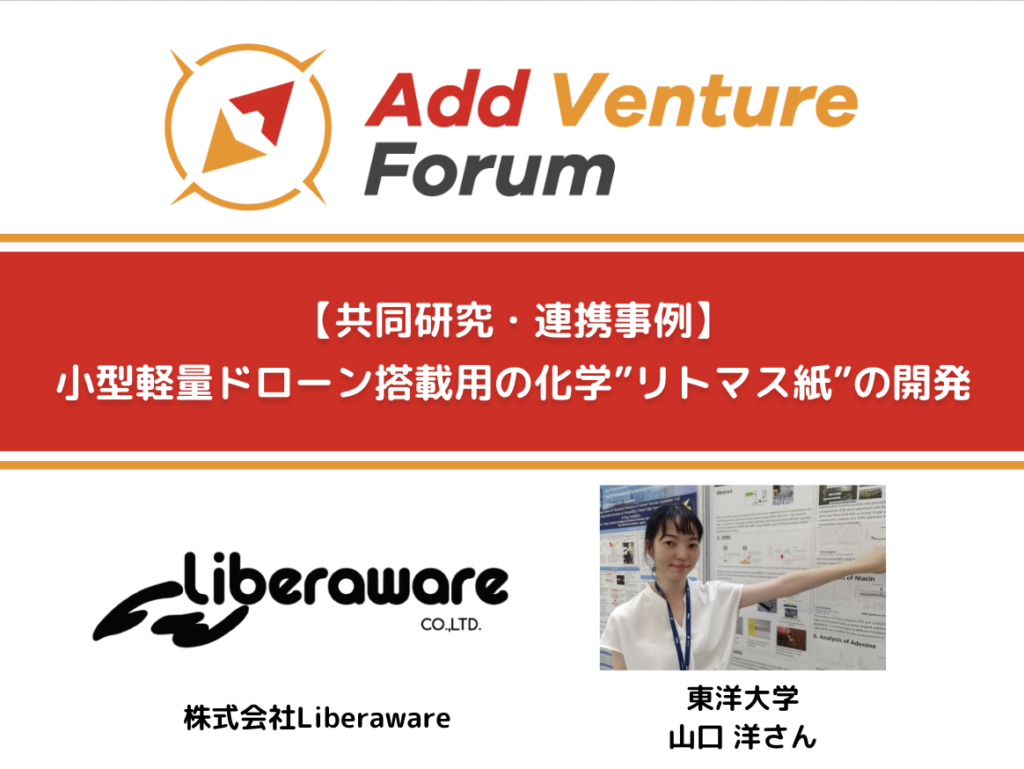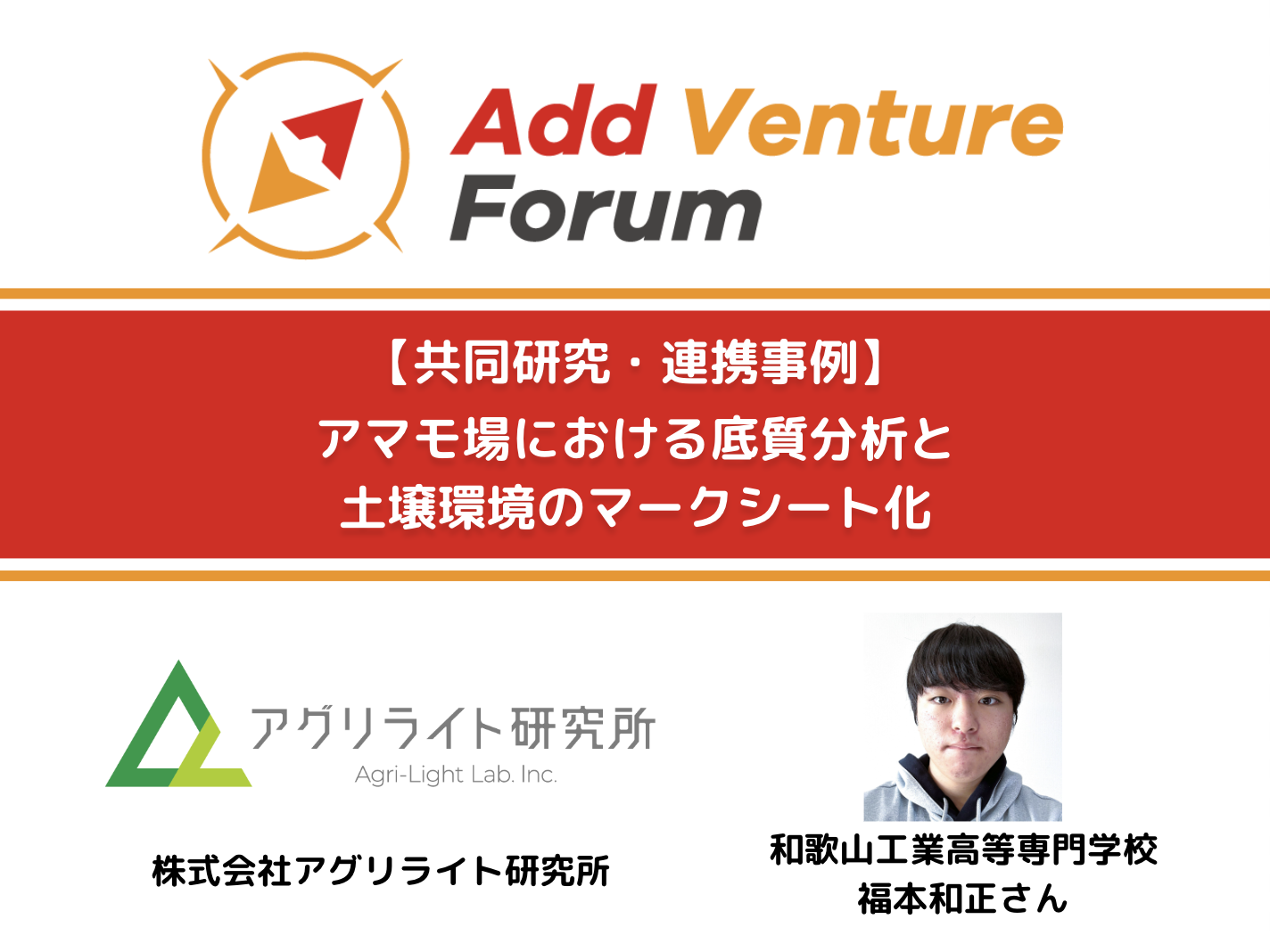Case Study] Liberaware and Toyo University Launch Joint Project with Mr. Yamaguchi

Development of chemical "litmus paper" for small, lightweight drones
At the Ad Venture Forum, participants are invited to submit proposals for joint research themes with exhibiting companies.Ad Venture ScholarshipAfter the selection process, joint research based on the theme selected for the scholarship was initiated.
Adopted Theme
Theme: Development of chemical "litmus paper" for use with small, lightweight drones
Company: Liberaware Inc.
Researcher: Hiroshi Yamaguchi, Toyo University
Below are the scholarship applications from students
Details of Cooperation
Hydrogen sulfide and other gases can be present in sewage systems, factory tanks, and wastewater treatment facilities, and can lead to fatal accidents involving workers. To ensure the safety of workers, a "litmus paper" that can detect volatile sulfur compounds is mounted on a small drone, and a remote detection system is being tested. The "litmus paper" used in this proposal is a lightweight surface-enhanced Raman spectroscopy substrate, which is read by a Raman spectrometer after flight.
Reason for Application
The proposer's laboratory has developed a mass-producible SERS substrate and reported that its detection performance for volatile sulfur compounds is superior to that of commercial products. They have also studied sulfurous acid gas and mercaptan as targets and have succeeded in developing a lightweight substrate (0.1 g) that can be mounted on a small drone. While we were considering field verification as the next step, we had a discussion with Liberaware at the Adventure Forum and felt that we could realize our idea and would like to collaborate with them.
Vision for the future
The development of a lightweight SERS substrate has already been completed, and it can be mounted on a small drone. Furthermore, it has been confirmed that volatile sulfur compounds can actually be detected. However, the laboratory at the university can only prepare a few dozen centimeters of space for a single piece of simulated sewage pipe for experiments, and it is difficult to prepare a larger container. Therefore, in the next stage of development, a space of more than 1 m per piece will be filled with the target gas, and the drone will be flown. Because hydrogen sulfide is expected to be stagnant near the bottom in sewage pipes, the drone's flying altitude and the wake of the rotor will have a significant impact on the spatial distribution of hydrogen sulfide. Based on the above, we aim to reproduce conditions similar to those described above, compare the methods of mounting the lightweight SERS substrate (i.e., 1) on the surface of the rotor, 2) on the surface of the main body, 3) suspended about 1 m below, 4) horizontally separated by several 10 cm or more, and obtain information on the detection limit concentration and exposure time necessary for the detection. The goal is also to identify potential problems by flying the device at actual sites.
Future Plans
activity planning
A Comparison of mounting methods with their own drones
Attempt to measure using the method of activity goal (4) that can be implemented at the university. (mid-December to late December)
B Trial experiment with Liberaware's drone
Check to see if gas (odorant) from cassette cylinders, etc. can be detected during flight. (From early January to early February)
C Measurements in the actual field
Verification in locations where volatile gases such as hydrogen sulfide may be present. (from mid-February onwards)
Participating Partner Companies Wanted】】 【Partnerships
Ad Venture Forum is looking for exhibitors. If you are interested, please feel free to contact us.Contact Us






